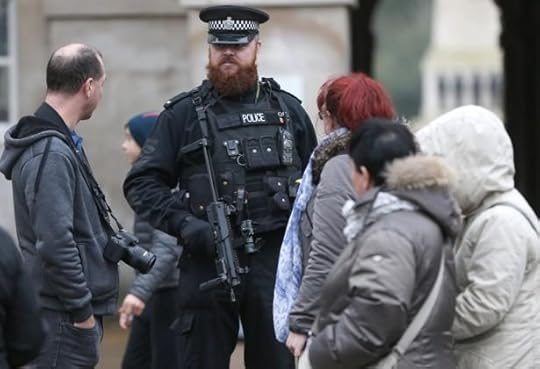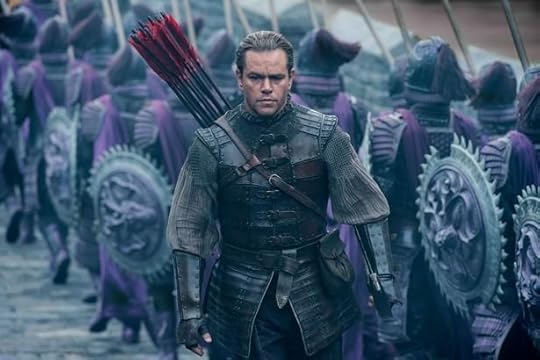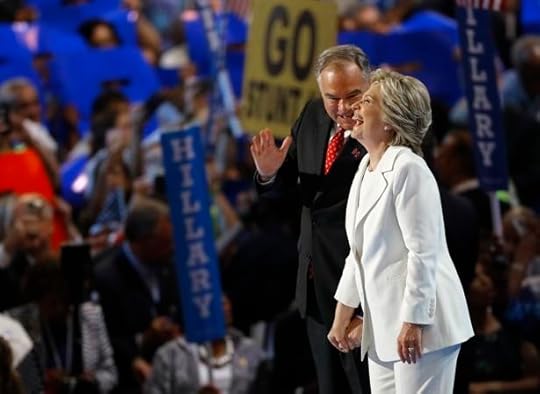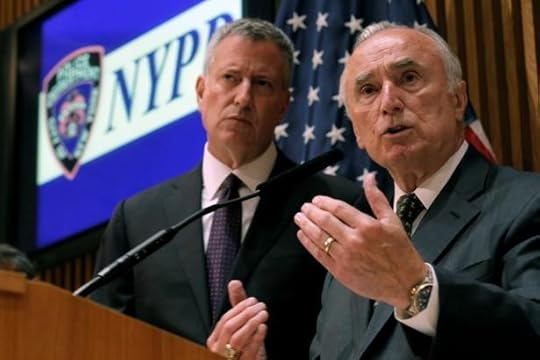Atlantic Monthly Contributors's Blog, page 108
August 3, 2016
The Rise of Gun-Carrying Cops in London

NEWS BRIEF London will add 600 armed officers to its police force, a decision the city’s mayor and police commissioner called necessary because of the recent terrorist attacks across Europe.
Unlike in the U.S., not all of Britain’s officers carry guns. The move, announced Wednesday, to deploy not only more officers, but armed officers, signals a significant shift in the country’s policing practices following the terrorist attacks in neighboring countries. The deployment is the first in a larger effort to increase armed patrols across England and Wales, which together had about 127,000 police officers in 2015. Of those, 5,600 were armed officers.
“The reality of having to deal with armed and deadly attackers is that you need firearms officers who will use force to stop those attackers in their aim,” said Metropolitan police commissioner Bernard Hogan-Howe. “Our firearms officers are the ones who will run towards the danger.”
The BBC spoke with a few people in London to see how they felt about the announcement. One man, John Lee, told the BBC:
“I never thought I would see the day British police carried weapons in the street like this, but I think that needs to happen now—whether we like it or not.”
BBC reported another man said:
“I have mixed feelings about it,” says Ebuka Orunta, 20, from south London. "On one hand I feel safer knowing the Met has a strategy in place to mitigate the risk.
“On the other hand, we’ve seen the problems with police brutality in the US. It’s important the people in charge of this weaponry are the right people who are going to protect us.”
London officials hope to deter attacks with an armed presence and increase response time in the case of an attack. Other countries in Europe have responded to the threat of terrorism in similar ways. In April, France guaranteed a 20-minute response time from police and military forces to any attack. A quick response time was praised as the reason more people were not hurt or killed in the recent attack on a church in Normandy, France.

China's New Futuristic Commuter Bus

NEWS BRIEF New bus technology made its debut Tuesday during a road test in Qinhuangdao, China, the BBC reports—and it’s truly the stuff of the future.
Futuristic "straddling bus" TEB conducts 1st road test in N #China's Hebei on simulated traffic conditions #XinhuaTV pic.twitter.com/xY929JAAJo
— China Xinhua News (@XHNews) August 3, 2016
The TEB, also known as the “straddling bus,” got its nickname because its design—which spans 72 feet long and 25 feet wide— doesn’t require elevated tracks or underground tunneling. Instead, it simply straddles the traffic below, allowing cars beneath to drive uninterrupted.
The electric-powered bus is expected to accommodate up to 300 passengers, or the equivalent of 40 conventional buses. Its operation has the potential to cut carbon emissions by almost 2,500 tons, the project’s chief engineer Song Youzhou told Xinhua news agency in May. The bus is expected to reach speeds of up to 60 kilometers, or 37 miles, per hour.
Song’s idea for the project was introduced in 2010. A working scale model was first unveiled in May at the 19th annual China Beijing International High-Tech Expo.
In addition to easing traffic on the road, the project also aims to alleviate China’s air pollution problems.

August 2, 2016
A Blow to Delaware's Death Penalty

The Delaware Supreme Court struck down the state’s death-penalty statute Tuesday, ruling that the latitude it granted to judges during the sentencing phase violated the Sixth Amendment.
Most high-profile death-penalty cases revolve around the Eighth Amendment’s prohibition of cruel and unusual punishment. But Rauf v. Delaware instead centers on the Sixth Amendment and the right to a jury it protects.
States with the death penalty generally require a jury to weigh aggravating and mitigating circumstances before sentencing a defendant to life imprisonment or death. At the start of 2016, three states—Alabama, Delaware, and Florida—allowed judges to impose a death sentence independent of the jury’s determination. In some cases, judges could override a jury’s recommendation of a life sentence and impose death instead.
Those statutes came under renewed scrutiny in January after the U.S. Supreme Court struck down Florida’s death-penalty statute in Hurst v. Florida. Florida’s procedures only allowed jurors to render an “advisory sentence” during the sentencing phase; state judges could then independently weigh the factors and hand down life or death.
The Court struck down the scheme by an 8-1 vote. Writing for the majority, Justice Sonia Sotomayor noted that like earlier sentencing procedures quashed by the Court, “Florida does not require the jury to make the critical findings necessary to impose the death penalty.” By handing that power to the judge, the system ran afoul of the Sixth Amendment.
The Court’s ruling in Hurst proved fatal to Delaware’s death-sentencing procedures. Under state law, jurors only need to unanimously agree that at least one aggravating factor exists for a judge to hand down a death sentence. Jurors then also determine whether the aggravating factors outweigh the mitigating factors. But, unlike in almost all other states with the death penalty, that calculus doesn’t bind the judge, who can hand down a death sentence of his or her own accord.
In a concurring opinion joined by two other justices, Delaware Chief Justice Leo Strine laid out a lengthy history of American capital punishment and the paramount role juries played in it. A fourth justice partially concurred with the decision, arguing that some of the questions answered by the Court should have been left to the Delaware legislature.
Only Justice James Vaughn Jr. argued against applying Hurst to the state’s death-sentencing procedures. Central to his reasoning were significant differences between Florida’s unusual system and the methods used by Delaware.
“Since the jury’s role was purely advisory, the judge could reject a jury finding that no statutory aggravating factor existed and sentence the defendant to death based on his or her own findings,” he wrote, describing the Florida scheme struck down by Hurst. “That cannot happen under Delaware’s statute,” which requires the jury to find at least one aggravating factor before proceeding, he noted.
While Strine acknowledged Hurst could be read differently, he stood by his conclusions about its applicability to Delaware.
“For myself, however, I find it impossible to embrace a reading of Hurst that judicially draws a limit to the right to a jury in the death penalty context to having the jury make only the determinations necessary to make the defendant eligible to be sentenced to death by someone else,” he wrote, “rather than to make the determinations itself that must be made if the defendant is in fact to receive a death sentence.”

Anton Yelchin and the Wrongful-Death Lawsuit Against Fiat Chrysler

NEWS BRIEF The parents of “Star Trek” actor Anton Yelchin have filed a wrongful-death lawsuit Tuesday against Fiat Chrysler, alleging that defects in the automaker’s Jeep Grand Cherokee led to their 27-year-old son’s death, according to the Associated Press.
Yelchin, who was known for his portrayal of Pavel Chekov in the “Star Trek” franchise, was killed June 19 outside his Studio City home when his 2015 Jeep Grand Cherokee rolled backwards down his steep driveway and crushed him against a security fence. That model of the SUV had previously been recalled in April due to issues with its gearshift system, which was known to confuse drivers and cause the vehicle to roll away unexpectedly. Victor and Irina Yelchin’s lawsuit alleges that the gear selector in their son’s vehicle was defective, causing his car to roll back.
The recall report reads:
Drivers erroneously concluding that their vehicle’s transmission is in the PARK position may be struck by the vehicle and injured if they attempt to get out of the vehicle while the engine is running and the parking brake is not engaged.
Following Yelchin’s death, Fiat Chrysler said it would conduct a "thorough investigation" into the incident. The automaker on Tuesday extended its sympathies to Yelchin’s parents, but said it could not offer further comment on the wrongful-death lawsuit because it had not yet been served.
A group of Jeep Grand Cherokee owners filed a class-action lawsuit against Fiat Chrysler in June, alleging that the automaker didn’t do enough to address the problems with the model. The lawsuit was filed just days after Yelchin’s death.

What Is Matt Damon Doing on Top of The Great Wall?

The poster for The Great Wall, an epic Chinese-American co-production coming out next February, is remarkable simply for managing to say so much about the film industry today with so little detail. The frame is filled by Matt Damon’s sweaty face, backgrounded by the Great Wall of China, engulfed in battle. “1700 Years to Build; 5550 Miles Long; What Were They Trying to Keep Out?” the tagline asks. “MATT DAMON,” the billing beneath it seems to reply.
The Great Wall may well represent the next step in Hollywood economics: A film made by one of the country’s greatest directors (Zhang Yimou), shot on location in China and telling a story about the Northern Song Dynasty, while starring one of Hollywood’s biggest names. The Great Wall, with a budget of $135 million, is the most expensive Chinese film ever made. As China becomes a bigger and bigger part of the overall box-office market, it makes sense that Hollywood would produce more films designed to appeal directly to the country’s audiences.
But the poster alone has sparked an outcry that the film’s creators should have seen coming from 5,500 miles away—especially given all the recent attention paid to the industry’s lack of diversity in front of and behind the camera. The Great Wall is now the most dramatic example of whitewashing: Though it’s rooted in Chinese history and culture, and is made by a Chinese director and studio, the film is already relying solely on the face of a well-known white American actor to sell its story.
Damon is, by all accounts, a well-meaning guy with left-leaning politics, but he’s already once been embroiled in a debate over Hollywood’s institutional racism after a much-discussed episode of his HBO filmmaking show Project Greenlight. Now, less than a year later, the man who lectured the African-American producer Effie Brown over the limits of diversity in Hollywood is the face of a film that embodies all of the industry’s worst tendencies, by yet again putting a white American actor at the center of another culture’s story.
The film’s trailer is by all accounts spectacular; Zhang is known as one of Chinese cinema’s greatest visual stylists for a reason. But Damon speaks the only lines, and is the only actor billed, despite the presence of Chinese-language cinema legends like Andy Lau and Zhang Hanyu. One imagines that in China, the advertising will tell a different story, and the poster won’t be as Damon-dominant. Hollywood has been not-so-subtly featuring Asian actors and locations in many of its recent blockbusters to appeal to a wider market.
Transformers: Age of Extinction, the fourth in the sci-fi action series, was released to poor reviews in 2014 and was the franchise’s lowest grosser in the United States. But in China, it was the most successful film in the country’s history, partly because its final act was shot in China (including some segments by the Great Wall and the extended destruction of Hong Kong). Iron Man 3 contained an extra four minutes of footage that were only shown in China, including an obvious bit of product placement for the popular drink Gu Li Duo. Both films, like The Great Wall, were partly financed with Chinese money; both, of course, featured white American stars (Mark Wahlberg and Robert Downey Jr. respectively).
Still, you could be forgiven for thinking a film about the Great Wall of China, set in the 11th century, would rely somewhat less on typical A-listers—perhaps featuring a diverse ensemble cast. Amid the maelstrom of criticism that greeted the poster and trailer, the Taiwanese American actress Constance Wu (and star of the ABC sitcom Fresh Off the Boat) stood out for her blistering condemnation of her own industry’s approach to telling stories about other cultures. “We have to stop perpetuating the racist myth that only a white man can save the world,” she said. “We don’t need salvation. We like our color and our culture and our own strengths and our own stories.”
The Great Wall feels like a huge step in the wrong direction.
Wu correctly poked holes in the pervasive myth that white actors guarantee a better box-office take worldwide, which is constantly thrown out as an excuse for not putting actors of color in leading roles. Films like Gods of Egypt (which saw white actors playing Egyptians), Pan (where Rooney Mara played the Native American Tiger Lily), and Aloha (where Emma Stone played a half-Asian character) were all box-office bombs, while Star Wars: The Force Awakens (which had a black male lead) and Furious 7 (with an ensemble full of actors of color) were two of the biggest hits of 2015. “Money is the lamest excuse,” Wu said. “So is blaming Chinese investors, [whose] choices can be based on unconscious bias too.”
The Great Wall is not the only upcoming Hollywood blockbuster guilty of blatant whitewashing: Projects like Doctor Strange, with Tilda Swinton playing a Tibetan monk, and Ghost in the Shell, with Scarlett Johansson in the lead role of a film based on a famous work of Japanese anime, have also been decried. Each film might have its own complicated reasons for arriving at said casting decisions: With Doctor Strange, Marvel Studios claimed it was trying to avoid political difficulties with the Chinese government, while the reaction within Japan to the Ghost in the Shell casting news was surprisingly muted, partly because of the intentionally vague portrayal of race in anime.
But no matter what the intentions behind its production, The Great Wall feels like a huge step in the wrong direction, a critical disaster waiting to happen no matter what the economic justification for its existence might be. Last month, Marvel and Warner Bros. advertised a slate of highly anticipated films starring women and actors of color at their Comic-Con panels. China is poised to one day outstrip the United States as the biggest movie market on Earth. If Hollywood wants to keep pace with its audience, it will stop blindly casting actors like Damon and give more chances to performers typically overlooked by the industry.

Tegan and Sara's Cleverly Queer Pop Videos

Tegan and Sara’s recent radio-friendly pop stands out because of the singers’ two distinctive voices, intelligence in craftsmanship, and unique point of view—a point of view informed partly by the fact that sisters Tegan and Sara are gay. It’s possible to miss that last fact when listening to many of their songs. But sometimes you’ll notice a “she” where a “he” would be from a straight female singer, and sometimes there’ll be yet-subtler tells within the lyrics.
The band has kept releasing videos for songs off of June’s Love You to Death, the first few of which fell into the category of “pop video anyone could make.” There were cartoon backdrops for the glorious single “U-Turn,” a music video seemingly about familiar music-video conceits for “Boyfriend,” and a very adorable showcase of dogs filmed in slow-mo for “100x.” Their latest two clips are more out-and-proud, in the tradition of their 2012 “Closer” video that staged a raging party filled with gay and straight makeouts. Most strikingly, these new videos demonstrate how queerness can define a person’s life beyond sexual desire and gender identification—it can be an aesthetic, and an orientation toward society.
The latest, for “Faint of Heart,” gathers up LGBT actors—including a number of trans and other kinds of gender-noncomforming young people—for a lip-sync battle on stage. Teen Vogue, where the video premiered, announced, “This is representation at its best,” and that’s certainly a valid interpretation: It gives a category of people who have long been mostly excluded from popular media their moment onstage, literally. “This particular video is especially significant because it features trans actors without focusing on their trans status or transition,” Cooper Treibel, one of the featured performers, said in the press materials. “This shows young and closeted trans people that they are not defined or limited by their trans status, and can hopefully find a sense of pride in their community and in themselves."
Yet there’s cleverness that goes beyond casting in the clip too. Dressing up and singing to a party are big music-video tropes, but here it gets special meaning: The actors are each impersonating huge cultural icons with queer significance. Tyler Ford plays Prince, Treibel plays David Bowie, Ella Giselle plays Madonna, and Olabisi Kovabel plays Grace Jones—all celebrities whose gender-bending was transgressive in its time and is iconic today.
I also love that Elvis Presley is in the mix, played by Cooper Treibel. The King of Rock is more commonly seen as a straight male icon than a gay symbol, but he has become a visual touchstone both for lesbian fashion and for drag kings. The female impersonator Elvis Herselvis once said, “It is one of the last bastions of masculinity, the right to ‘do’ Elvis. … I personally think he was very queeny; in the 1950s he wore make-up and pink on stage when that was unheard-of behavior for a straight man.” The video also has Eli Erlick and Ni Ching-Marino playing young versions of Sara and Tegan, on stage and in the audience, suggesting rightly that this band is part of the pantheon of queer icons—a pantheon that, the video also suggests, is not actually defined by its members’ sexuality but rather their influence on LGBT people.
The other new Tegan and Sara video, “BWU,” has a very different and poignant meaning. In it, Sara goes around L.A. seeming to propose marriage to various people, including apparent girlfriends and total strangers. But there’s no wedding band within her ring box, and so the first few proposal recipients look at her like a weirdo before she finds a woman who accepts the offer. The subversion of the cliche of a big engagement moment jibes with the song’s message about desiring love and commitment without the formal institution of marriage. Obviously there are straight people who don’t want to get married, but the issue is more fraught among queer people because for so long, they’ve had to construct identities outside of the possibilities of marriage—and have been able to maintain a disinterested outsider’s perspective on the institution’s pros and cons.
“I was happy when the Supreme Court ruling legalized same sex marriage in the U.S.A.,” Sara Quin told EW’s Nolan Feeney when premiering the video. “But I was also relieved that I could finally ‘come out’ as a person who actively dislikes the institution—specifically the assumption that by not participating in the ritual you are a deviant or unlikely to share the same common values as someone who does.” She also explained that dislike’s rooting in her own family history: “After my parents’ divorce, my mom and dad remained friends. I saw their future relationships stretch into decades, but no wedding bells rang. Common law seemed as binding as matrimony, and I grew to see their choices as rebellious and inspiring. As a teenager and then young adult—newly out as queer—I didn’t mourn the fact that I wouldn’t legally be able to marry my girlfriend.”
Again, this skepticism toward marriage isn’t solely restricted to LGBT people, and many feel just the opposite. But an ambivalence about telling the government you’re settling down for life with one person is something that shows up again and again in gay discourse—Looking’s series finale was a recent example. Tegan and Sara are the latest to try and imagine a different kind of happily ever after, part of their ongoing effort to carve a space for people like them in the pop-music world.

The Chinese Crackdown on Human-Rights Activists

NEWS BRIEF It took only three hours for a Chinese court to convict an activist of subverting state power.
The short, one-day trial of Zhai Yanmin, a human-rights lawyer who was among 300 activists arrested since July 2015, is part of a major government crackdown on freedom of speech in the country. Zhai was given a three-year suspended sentence for organizing human-rights protests. While he will not serve his sentence in jail, he is banned from activism and will be heavily supervised by state police. He has been politically active since the Tiananmen Square protests in 1989.
Three other activists from his law firm were also arrested will soon face trial in Tianjin, a city in northeastern China, and will likely face a similar fate. The BBC reports:
China’s crackdown last year targeted the country’s small human rights advocacy movement, and involved lawyers tackling cases to do with freedom of speech, religion or abuses of power.
Most of the arrested activists were released but observers say China is taking a strong line against those still in detention.
Activists fear the politically motivated trials will have a chilling effect on anyone willing to challenge the Communist Party. One of Zhai’s colleagues, Wang Yu, who was also arrested, appeared in a video on Monday reportedly renouncing Zhai and his legal work. It is unclear, though, if Wang gave the statement willingly, warns the BBC.

Hillary Clinton and the Peace of the Pantsuit

In July of 2007, Hillary Clinton, then a senator representing the state of New York and a candidate for the presidency of the United States, delivered a speech that ended up being memorable less for its words than for its visuals. Clinton, you see, while delivering her message in her now-typical uniform—a pantsuit—had worn a shirt under the suit’s jacket that revealed … a bit of cleavage. A very little bit, but still. “The neckline sat low on her chest,” The Washington Post reported of the scene, “and had a subtle V-shape. The cleavage registered after only a quick glance. No scrunch-faced scrutiny was necessary. There wasn’t an unseemly amount of cleavage showing, but there it was. Undeniable.”
Undeniable. As political scandals go, this was a decidedly non-scandalous one, and Clinton’s “Tentative Dip Into New Neckline Territory,” as the Post’s headline had it, would—albeit after write-ups in The New York Times and the Times of London and a discussion on Meet the Press—soon be forgotten in favor of the 2008 campaign’s many other teapot-tempests. Today, Cleavagegate serves mostly as a hazy reminder of the particular challenge that Clinton, as a woman who dares also to be a leader, has been made to navigate over the long course of her public life: the media’s often aggressively ambivalent relationship with women who seek power. Her shirt failed to properly—which is to say, abashedly—disguise the fact that Clinton, a wife and a mother and a soon-to-be Madam Secretary, was in possession of a pair of breasts; for that reason, the shirt became the topic of discussion within some of the nation’s news outlets of record.
This would of course be neither the first nor the last time that Clinton’s femininity would, via her clothing, chafe against her political and professional ambitions. But it would be one of the last times that Clinton would be “tentative” about her style. The Democratic Party’s new presidential nominee has, instead, settled on a sartorial formula that many of her fellow women politicians, from Angela Merkel to Theresa May to Sarah Palin to Claire McCaskill, have relied on, as well: a simple jacket and a matching pant, over a basic—and usually pointedly high-necked—shell. The pantsuit. The uniform that claims to care more about substance than style, and that fights against longstanding cultural assumptions that women politicians can fairly be judged according to their clothing. The pantsuit is, for the trailblazing woman leader, an empowering paradox: It’s a statement outfit that makes its statement by saying as little as possible.
* * *
Here is a true fact: It wasn’t until 1993 (1993!) that women were allowed (allowed!) to wear pantsuits on the Senate floor. The “allowing” occurred, in the end, only because Barbara Mikulski and Carol Moseley Braun decided to defy an arcane rule, leading, eventually, to its erasure. (Or to its modification: Pants-clad women are now allowed in the Senate chamber so long as the pants in question are accompanied by a jacket.) The rebellion was fitting: Pants are, in their way, political. Women started wearing them in the U.S. around the same time that they won the vote, and the garments reflected their egalitarian ambition. And suits are symbolic from the other side of the spectrum: They are the ultimate totems of cheerful corporate conformity. They whiff of willful captivity.
It wasn’t until 1993 (1993!) that women were allowed (allowed!) to wear pantsuits on the Senate floor.
Over the near-decade since Cleavagegate, Clinton’s pantsuits have evolved from a default uniform—easy, unsurprising, strategically dull—into something more transcendent, something vaguely suggestive of the earliest meanings of the woman-in-pants: She’s taken the article of clothing whose whole point is conformity and made it her unique brand. Clinton lists “pantsuit aficionado,” tongue firmly in cheek and leg firmly in slack, on her Twitter bio. When she joined Instagram in June of 2015, her first post was a picture of red, white, and blue suit jackets on hangers—captioned “Hard choices.” Her campaign’s merch store sells an “Everyday Pantsuit Tee,” the garment emblazoned with silk-screened lapels and a logo-ed brooch, for $30. Last year, Clinton appeared on The Ellen Degeneres Show with a 5-year-old fan who wore an adorably miniaturized version of one of her iconic blue suits. She has made, through the years, many, many jokes about pantsuits.
Related Story

Dana Scully and the Sisterhood of the Traveling Pantsuit
For Clinton, the pantsuit represents a fusion between the symbolic extremes of the suit that’s worn by a woman: On her—by her, for her—the garment suggests neither freedom nor conformity, but instead … a kind of capitulation. It takes the lessons of Cleavagegate, and of all the other times Clinton’s clothing choices have collided with a media that is not quite sure what to make of her, and buttons them up in a sensible, cleanly cut jacket. Clinton’s pantsuit reassures. It is simultaneously defiant and conciliatory. It is confident without being flashy. It says both “I am a woman” and “I am so much more than just a woman.”
Which is also to say that the pantsuit, like so much else about Clinton’s visible, public life, has been the outcome of decades’ worth of honing and polishing and experimenting. It is a years-in-the-making compromise between Hillary the person and Hillary the persona. Clinton, after all, did not always suit up. As First Lady of Arkansas, and then of the United States, she experimented with fashion—she even seemed to have fun with it! Ball gowns, daring cuts, shoulder-padded power suits. And: She got mocked for those choices, repeatedly. She got called “frumpy.” And the criticism didn’t end when she assumed elected, and then appointed, office. Remember … Scrunchiegate?
Go the Pant Suits! #Hillary2016 pic.twitter.com/yQZU66SyEB
— Helen O'Rahilly (@HelenORahilly) April 12, 2015
Clinton is often accused of distrusting, and of mistrusting, the media in a manner so strident that her aversion verges on paranoia. The journalistic fixation on her clothes, however, and on her appearance overall, whether on her makeup or her hair or her contact lenses, goes a long way to explain that. The media, over the years, has treated Clinton—not always, certainly, but often—with the kind of breathless objectification often on display in celebrity profiles. It has assumed a kind of ownership over her and, by extension, her clothes. Politicians will always offer themselves up to the public in a kind of ritual sacrifice; that includes, as Chris Christie and Bill Clinton and Marco Rubio know all too well, their bodies as well as their fuller selves.
For Clinton, though, the collision of forces—the dynamics of celebrity, the dynamics of gender—has been particularly defining when it comes to her portrayal in the media. For her, the talk about clothes—the policing of her appearance—has been a conversation rather than a side note. And that in turn goes a long way toward explaining why Clinton has embraced the pantsuit, which is an outfit that, perhaps more importantly than anything else, tends to preclude itself as a topic of discussion. Journalists are biased, above all, toward newness, and there are few things more boring at this point than the headline “Hillary Wore Another Pantsuit.” There can be stories even in suits, certainly, as the debates about the cost of her “extravagant” wardrobe have made clear. For the most part, though, the suits have forced the public into talking about things other than Clinton’s appearance—her ideas, perhaps, or her fitness for public office.
As The New York Times’s fashion critic, Vanessa Friedman, noted of Clinton after one of the primary debates: “During and after the debate on Sunday, there was, for the first time I can remember, barely a whisper about what she wore. Can you even remember what it was? It was so nondescript, it was just not cause for comment.”
The suit is an outfit that says, basically, “Please do not talk about my outfit.”
In that sense, whether the suit in question is neutral or jewel-toned or a new-beginnings-symbolic white, the suit itself, the form that for Clinton has come to double as a uniform, carries a self-contained message to the media. It is an article of clothing that says, basically, “please stop talking about my clothes.” It is a garment that suggests acquiescence to the public—via the conformity of the suit—and, at the same time, offers a kind of armor from public scrutiny.
Clinton, trailblazer though she is, is by no means the first woman politician to use the suit in that strategic way. Angela Merkel, too, favors colorful pantsuits. So do many of Clinton’s fellow Americans, among them Elizabeth Warren and Nancy Pelosi and many other prominent members of Congress. The women have perhaps all, in their way, taken a page from Margaret Thatcher, whose clothing—the outfits she wore as the United Kingdom’s first woman prime minister—was recently rejected from an exhibit in London’s Victoria and Albert Museum on the grounds that it does not fit the museum’s definition of “fashionable dress.”
Our pantsuits, ourselves: It likely will not always be this way. Women politicians who come later, on the kitten heels of Hillary Clinton, may not need to rely on clothing that offers aesthetic predictability in the service of political substance. Glimmers of that more permissive fashion future are already here. Theresa May wears leopard-print heels. Madeleine Albright wore statement brooches. Women leaders in business as well as in politics experiment with sleek dresses and chic stilettos, and their choices are rarely treated, in the media, as compromises to their power. Clinton’s pantsuits, for all they have accomplished for her candidacy, have called to mind Thatcher’s own sartorial motto: “never flashy, just appropriate.” It will be a good day, though, when being “flashy” and being “appropriate” will not be assumed—in fashion as in anything else a woman might do—to contradict each other.

The Recall Movement Against Venezuela's President

NEWS BRIEF Venezuela opposition lawmakers collected 1 percent of voter signatures in all 24 of the country’s states, completing the first step in the process to recall President Nicolás Maduro.
The country’s National Electoral Council approved the effort on Monday, which means opposition leaders can move on to the next step: gathering 20 percent of the country’s vote in favor of a referendum to recall Maduro.
As the BBC notes, timing is crucial:
... because if Maduro were to lose a referendum this year, as polls indicate he would due to an economic crisis, that would trigger a new presidential vote, giving the opposition a chance to end 17 years of socialism.
But should he lose a referendum next year, Maduro, 53, would be replaced by his vice president, maintaining the Socialist Party in power until the OPEC nation's next presidential election scheduled for the end of 2018.
The late Hugo Chávez picked Maduro as his successor in 2013. Not longer after, world oil prices crashed, and Venezuela’s oil prices dropped 50 percent. Oil makes up about 95 percent of the country’s export revenue, and 25 percent of all gross domestic product. That combined with drought has led to massive food shortages, and hospitals have run out of drugs to treat patients. As a result, citizens have held massive protests across the country. Grocery stores have been looted, and some people have snuck across the border into Colombia to buy food. Much of the blame for this has fallen on Maduro and his socialist party.
The date for another vote, which will require 20 percent of Venezuelans to favor the recall before a national referendum can take place, has not yet been announced.

Exit, Bill Bratton

lNEWS BRIEF New York City police commissioner Bill Bratton will resign in September after nearly three years on the job, Mayor de Blasio announced Tuesday afternoon.
“He is the architect of our neighborhood policing strategy,” de Blasio told reporters at a news conference, with Bratton at this side.
Bratton will be replaced by James O’Neill, who has served as chief of the New York Police Department since 2014.
De Blasio appointed Bratton to the top police job in 2014. Bratton previously held the role from 1994 to 1996, during the Giuliani administration. He told reporters late last month that he would leave the job by the end of 2017.
Bratton said Tuesday he has worked to redefine the image of police officers in New York communities.
“When you see a policeman, remember that is your friend,” he said. "That’s the vision. … and that is happening, but it doesn’t happen overnight.”
New York City has seen a decrease in crime during Bratton’s latest stint. But his recent tenure has coincided with high-profile police killings of black men in the city, like Eric Garner in 2014, and elsewhere in the United States that have prompted widespread protests against police brutality and fueled a resurgent national debate over policing and race relations. Bratton has drawn some criticism for racially charged comments, including his description in May of “so-called rap artists” as “thugs.”
De Blasio said Tuesday he had developed “an intense bond” with Bratton in the last three years. The relationship between de Blasio and some police officers became strained in late 2014, when the mayor said he had to “literally train” his son Dante, who is biracial, how to interact with police officers. The remarks came after grand juries chose not to indict the officers involving in the killings of Garner and Michael Brown, a teenager in Missouri. The line angered many New York police officers, and thousands of them turned their backs in protest when de Blasio spoke during the funeral of a slain police officer in January 2015. Bratton defended the mayor, calling the officers’ gesture “very inappropriate.”

Atlantic Monthly Contributors's Blog
- Atlantic Monthly Contributors's profile
- 1 follower



